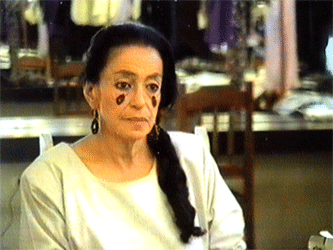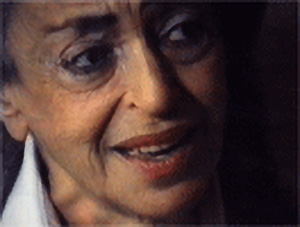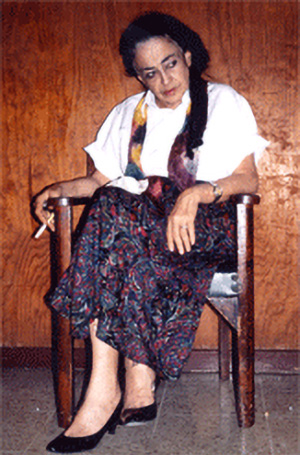-
Summary
The film portrays an extraordinary woman who, despite family and social abuse, freed herself from the roles imposed on her and set out on her own path. It tells of the sorrow that this path caused, of the injuries and damage she had to endure but the desire not to submit is "Stronger than pain". The film is also about a friendship between a younger and an older woman, a film about mothers and daughters. The Latin American Virginia Grütter still bears the name of her German stepfather; she is 66 years old in the year of the premiere of her film portrait. Today she lives in Costa Rica, where she was also born, but her life's journey took her to Cuba, Chile, Nicaragua, the GDR and wartime Nazi Germany. She was a theater director, enthusiastic about German poet Bertolt Brecht, whom she made famous in Central America, worked as a journalist and wrote about politics, art and culture, and published books on poetry, as well as two novels. From puzzle pieces of her biography and moments of rapprochement interwoven with texts of her poetry, songs and prose. The result is a very personal portrait of a woman between worlds, who broke and crossed not only the boundaries of society, but also her own.
-
Team
Director and Regie: Quinka F. Stoehr
Camera and Camera assitance: Rudolf Körösi, Ursula Körösi
Sound: Fredo Wulf
Editor: Gisela Tuchtenhagen
Production lead: Gerd Frese
Produced by: StoehrMedien in Kooperation mit dem SWFin collaboration with
Kuratorium junger deutscher Film, Kulturelle Filmförderung Schleswig-Holstein and Kulturelle Filmförderung Mecklenburg-Vorpommern -
Awards
Awarded the Prädikat "besonders wertvoll" medal
This successful documentary reveals the extraordinary personality of Virginia Grütter, parts of her exciting life and literary work, her beauty and her illness. It also includes the the filmmaker's perspective on her situation as she deals with her protagonist, which is what gives the film depth. Her helplessness, as in Virginia's refusal to continue filming, is not smoothed over, but opens the viewer's eyes and creates the need for more information about the progress of the film. Illness and aging are not shamefully concealed, but a central motif of the film. This film is not a glossy portrait, instead it shows the interactions between memory and the present with all its flaws. In hints, further contradictory aspects emerge, which the film accentuates without answering them hastily and conclusively. Not only an excellent dramatic development but the editing creates suspense and curiosity in the audience. The cinematic design is of a high visual-sensual quality.
FBW review -
Press reviews
Gegenwind, Kiel, No. 89, 2/96.
The difficulties of approaching a complex personality, the danger of merely reproducing one's own clichés, the balance between friendship and distance - such aspects of the process of making the documentary are openly included here. And this is done with great benefit to the film.
*TIP, Berlin, 3/96
Quinka Stoehr from Kiel has drawn a deeply personal, yet also disturbing portrayal of the 66-year-old, getting really close to the protagonist.
Filmbrief der kulturellen Fimförderung Schleswig-Holstein, Lübeck, No. 34, 1/96.
Due to the the spontaneous portrayal of the vulnerability of this heroine, seen by Quinka Stoehr in critical reverence, the film gains a high degree of suspense.
KINEMA comunal, Frankfurt a. M., 04/96
With impressive honesty, an idealized view of the "heroine," who for Quinka Stoehr is a "rebel," is excluded. The result is a portrait of a woman, of the friendship between an older and a younger woman, a film also about "traditions" between mothers and daughters, the specifically own 'history' of women, as demanded by Italian feminists of the 70s. (...)
ILA, (Information Service Latin America) Bonn, 10/96
With her artistic approach, Quinka Stoehr has succeeded in making a film that is remarkable in three respects: it gets close to the biography of a revolutionary Latin American artist, it makes clear which fractures and wounds such a life entails, and it reveals the difficulties of cinematic documentary making itself.
Virginia Grütter. Más fuerte que el dolor – Stronger than Pain
76 Min. |
1995
SWR
Producer/Director


